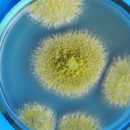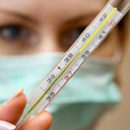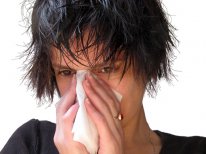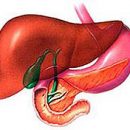What are the manifestations of ornithosis? What form of ornithosis exist? How to diagnose and the treatment of ornithosis? How is the prevention of the disease? Answers to these questions you will find in the article.
Content
Ornithosis
Ornithosis, or Psitactoz, is a respiratory infection, causative agent
Which is Chlamydia Psittaci (Chlamydia Psittatsi). Chlamydia is
Microorganisms that live and multiply inside human cells.
The source of infection is both sick and healthy externally
Birds - home parrots or chickens on the poultry farm. Less often infection occurs
from turkey, pigeons, sparrows or chap. Chlamydia is distinguished by birds as a secret
from the respiratory tract, and with the litter, the dried particles of which can fall
in the respiratory tract of man. Children usually infect from domestic birds. Infection
Urban pigeons are 30 - 80%. Moreover, in pigeons, ornithosis ducks can
Purify asymptomatic, but they highlight the pathogen in the environment.
Term «Ornithosis» consumed most often when the source of the disease
are birds not related to the family of parrots. A term «psittacosis» Used
Then when the source was parrots. The causative agent is common. For the first time ornithosis
was described in 1876 in patients with atypical pneumonia that had contact
with sick parrot. In 1929-1930. In Europe, an epidemic of psittakozosis occurred
12 countries, with mortality 20-40%. The cause of the disease was parrots delivered
From South America.
During household infection, individual cases of disease are observed,
Although there may be small, usually family, outbreaks. They develop soon
(after 1-2 weeks) after the purchase of a new bird. If the bedroom is located
in the house for several months, then the infection does not occur. Infection can
Be brought with a new bird or with food.
In the external environment, Chlamydia, psychotii retain viability of 2-3 weeks,
at a temperature of 37°C - 32 days, at a lower temperature - even longer (4-6°WITH
- Chlamydia lives a week, at temperatures -70°From - 2 years). When drying the pathogen
Keeps vitality for 5 years and more, boiling kills him in 5 minutes,
a disinfecting solution of chlorine (used in many hospitals) - for 3
hours.
The dried particles of mucus and feces with the causative agent fall on feathers and fluff, mix
with dust. Next with dust it enters the lungs (90% of cases), the remaining 10% of cases
- This is a fecal-oral transmission mechanism (through the mouth).
Patients with ornithosis danger to others do not represent.
Manifestations
Ornithose
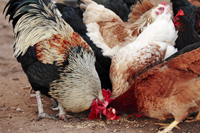
The defeat of the upper respiratory tract is usually absent (nasopharynk,
larynx), but in bronchi changes appear pretty early. The causative agent is settling
On the surface of the mucous membrane, then penetrates the cell where it starts intensively
multiply. After chlamydia accumulates in cells, cells are broken
and the pathogen gets in lymph. With Lymph current, it enters lymph nodes,
then through the breast lymphatic duct into the blood. There the causative agent may be
7-10 days. With blood current, the causative agent is distributed to various organs and systems
and forms secondary foci there. The most often amazed liver, spleen,
brain, myocardium.
Pneumonia with ornithosis is always primary, that is, with other methods of infection
The disease proceeds without pneumonia. With ornithosis, inxication phenomena are always expressed,
it can be due to both the influence of the pathogen itself and produced
to them toxin.
With an alimentary (through the mouth) infection, the disease proceeds atypically: the pathogen
penetrates the intestinal epithelium, but the living conditions for him are not very favorable,
Therefore, it is not multiplied by not strong and strong changes in the intestine.
Finding into the blood, the pathogen leads to intoxication and damage to various organs.
If a person has a well-developed immune system, then the disease proceeds asymptomatic.
Cleansing the body from chlamydia long, about 8 years, which is associated with long
Stay Chlamydia in the body. In these cases, chronic forms are developing
Ornithose. When weakening immunity, there is a recurrence of the disease. As a result
transferred infection immunity short-term and unstable.
The incubation period ranges from 5 to 30 days, more often from 10 to 12 days.
Forms of ornithosis
Typical form of ornithosis. Most often, ornithosis begins acutely without progressal symptoms
(T. E. The disease begins sharply without prevalizing his ailment). Often
Patients celebrate not only day, but also an hour of the disease. With chills rises
Body temperature, for the first two days it reaches the maximum level
(about 39°WITH). From the first hours weakness is defeated. Already by the end of the first
Patients day in bed. Headache appears in the front and dark area.
Pain is usually constant, at times amplified, at times weakens. Unlike
from headache with flu, it is not related to the movement of eyeballs. About
Half patients appear brutal pain in the muscles of the body and limbs.
Unlike other respiratory diseases, rarely arises in the throat,
Rubber, pain when swallowing. The duration of the sharp period is 10-20 days.
Complete reduction of power occurs after 2-2.5 months.
Complications may be due to the heated infection and the causative agent itself.
It may be myocarditis (inflammation of the heart muscle), thrombophlebitis (education
thromboms in veins), hepatitis, purulent otitis (ear inflammation), neuritis.
With severe forms of disease, fever lasts 3-4 weeks
Chronic forms arise with improper treatment of ornithous pneumonia
(sulfonamides, penicillin in this disease can not be prescribed); disease
lasts from 3 to 5 years, and then subsides, leaving behind the foci of pneumosclerosis
(part of the pulmonary fabric is replaced by the connective, it does not participate in breathing),
Sub-library (constantly keeps the temperature 37.1°C - 37.5°C), asthenization
(Weakness, Fast fatigue). If the disease proceeded without lung damage,
then his chronic form is manifested in the form of subfibrilite, weakness, sweating
palms; The skin acquires a marble color, finger shakes may appear.
Enlargement of the liver and spleen quite frequent phenomenon.
X-ray can be detected various foci of dimming, more often in
Lower lung departments. The blood changes reflect the presence of the inflammatory process:
The blood formula changes, echo.
Diagnosis and treatment of ornithosis
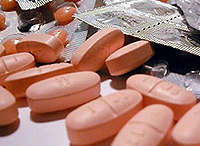
The diagnosis of ornithosis is carried out on the basis of careful analysis
data on the development of the disease, indication of contact with birds and immunological
blood studies under which the concentration of antibodies against the pathogen is determined.
The clinical picture of ornithous pneumonium is similar to the lung damage at Alveolitis (Inflammatory disease of the walls of Alveol),
which can also develop after contact with feathers.
Treatment with these states is completely different, even one can say,
Diametrically opposite: with ornithosis, antibiotics are needed, and with alveolite - hormones. Therefore, the correct proper diagnosis is so important.
Circle of antibiotics adapted to the specified intracellular
The pathogens are defined. These are antibacterial drugs, easily penetrating through
Cell wall and creating high intracellular concentrations. To their number
These include macrolides, tetracycles, fluoroquinolones. Taking into account the characteristics of the spectrum
Antimicrobial activity of Macrolid - Erythromycin, Spiramycin (Rovamicin), azithromycin
(Sumamed), Clarithromycin (Clasid) and DR., - are considered preparations of choice when
Ornithose. In the treatment of newborn, children and pregnant women macrolides Alternatives
No.
Prevention of ornithosis
The prevention of ornithosis is to comply with the rules
Poultry content. Need to be attentive when buying a new pet,
It is advisable to acquire it in proven places and be sure that the bird
Passed quarantine.
If your child has a continuously preserved subfebrile (37.2-37.7 degrees)
temperature, it is weakened, on radiographs there are minor changes or
so-called «Torn» Pneumonia, it is advisable to turn to the pulmonologist
or infectious background to eliminate ornithosis.

